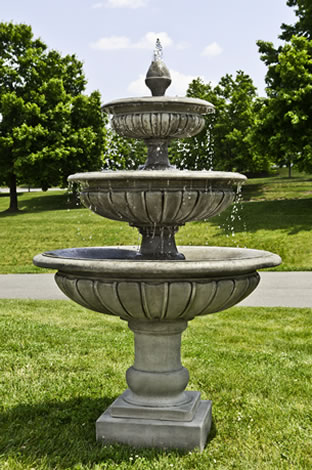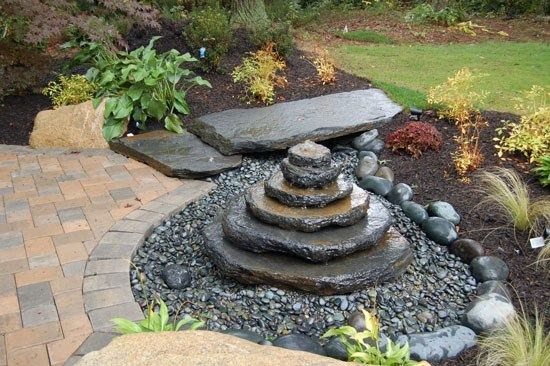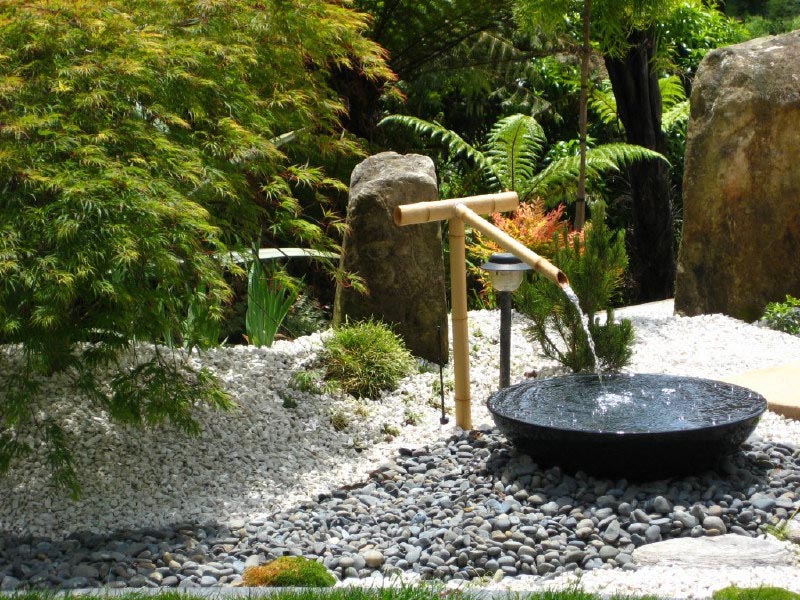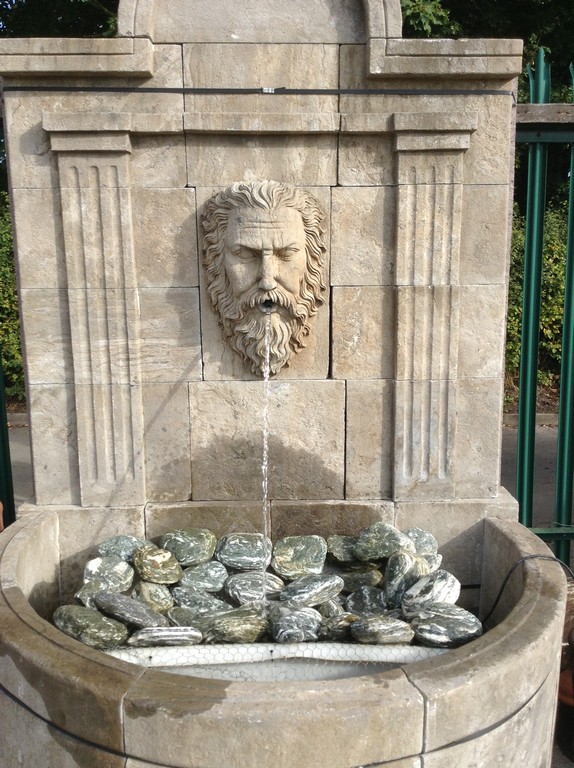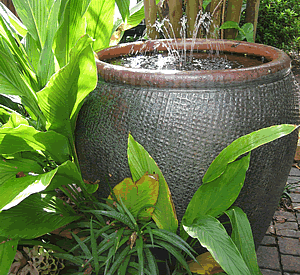Types of garden fountain
Contents |
[edit] Introduction
A fountain is an architectural feature which involves water and is often used as part of landscaping. A fountain can either pour water into a basin to create a ‘waterfall effect’ or spray water into the air to create a ‘jet effect’. Fountains are often used as decorative features in public spaces and gardens.
Fountains are available in a wide range of different styles, sizes and using many different materials, and are often customised according to specific design objectives. Fountains are typically prefabricated, sometimes as a piece of 'sculpture', and delivered to site.
Some of the most common types of fountain found in gardens are described below.
[edit] Tiered fountain
This is a very popular form of garden fountain, particularly in the Mediterranean where they can often be found in courtyards and plazas. A tiered fountain can be designed in a simple form or a more complex one with elaborate carvings, mouldings and other ornamentation. The water is pumped up to the top of the fountain through the core and then cascades down over the tiers to the bottom reservoir where it is recirculated.
[edit] Disappearing fountain
Also known as a pond-less fountain, this type of fountain is characterised by its reservoir which is concealed beneath the ground. This can create an attractive aesthetic when positioned near to a patio or stone path.
The lack of open pond or reservoir means that it is a safe choice for a garden if children are going to be present, but it also uses less water than other fountains since the water belowground does not evaporate. It also requires less space which makes it suitable for small patios and back gardens and it does not need much maintenance since debris and leaves cannot get into the reservoir, and the sun cannot cause algae to grow.
[edit] Japanese fountain
Japanese gardens are characterised by water fountains with the symbolism of spiritual and physical cleansing. They are generally designed simply with water trickling from a spout into a basin which is often made of stone and surrounded by vegetation.
[edit] Wall fountain
This type of fountain is customised to fit a wall and can be either freestanding or wall-mounted. A freestanding wall fountain is often quite large and has a basin that is placed on the ground. Whereas, a mounted wall fountain is built into an existing or new wall. Both types require a spout, basin, internal piping or tubing and a pump.
[edit] Self-contained fountain
This type of fountain is simple and easy to install and maintain. The materials used to make this type of fountain can include cast stone, ceramic, metal, fibreglass, and so on. They contain all the necessary parts that are required to function, including the plumbing and the pump. They can also be self-contained in terms of having their own water reservoir, avoiding needing to be placed close to a water source. The only external component they may require is a power source which can be provided via a solar panel, batteries, electrical outlet, and so on.
Before installing, it is important that the ground where it is to be placed is level and compact.
[edit] Related articles on Designing Buildings
Featured articles and news
RTPI leader to become new CIOB Chief Executive Officer
Dr Victoria Hills MRTPI, FICE to take over after Caroline Gumble’s departure.
Social and affordable housing, a long term plan for delivery
The “Delivering a Decade of Renewal for Social and Affordable Housing” strategy sets out future path.
A change to adoptive architecture
Effects of global weather warming on architectural detailing, material choice and human interaction.
The proposed publicly owned and backed subsidiary of Homes England, to facilitate new homes.
How big is the problem and what can we do to mitigate the effects?
Overheating guidance and tools for building designers
A number of cool guides to help with the heat.
The UK's Modern Industrial Strategy: A 10 year plan
Previous consultation criticism, current key elements and general support with some persisting reservations.
Building Safety Regulator reforms
New roles, new staff and a new fast track service pave the way for a single construction regulator.
Architectural Technologist CPDs and Communications
CIAT CPD… and how you can do it!
Cooling centres and cool spaces
Managing extreme heat in cities by directing the public to places for heat stress relief and water sources.
Winter gardens: A brief history and warm variations
Extending the season with glass in different forms and terms.
Restoring Great Yarmouth's Winter Gardens
Transforming one of the least sustainable constructions imaginable.
Construction Skills Mission Board launch sector drive
Newly formed government and industry collaboration set strategy for recruiting an additional 100,000 construction workers a year.
New Architects Code comes into effect in September 2025
ARB Architects Code of Conduct and Practice available with ongoing consultation regarding guidance.
Welsh Skills Body (Medr) launches ambitious plan
The new skills body brings together funding and regulation of tertiary education and research for the devolved nation.
Paul Gandy FCIOB announced as next CIOB President
Former Tilbury Douglas CEO takes helm.
UK Infrastructure: A 10 Year Strategy. In brief with reactions
With the National Infrastructure and Service Transformation Authority (NISTA).






